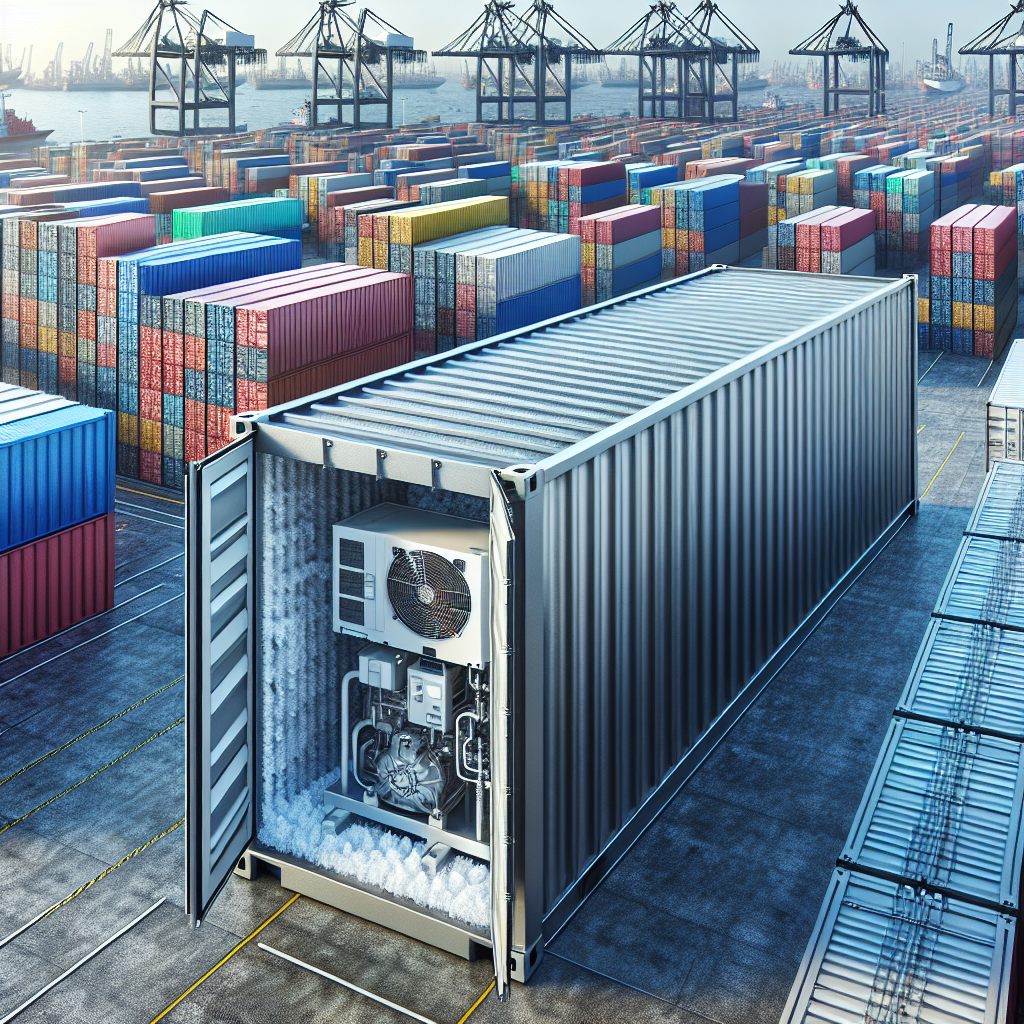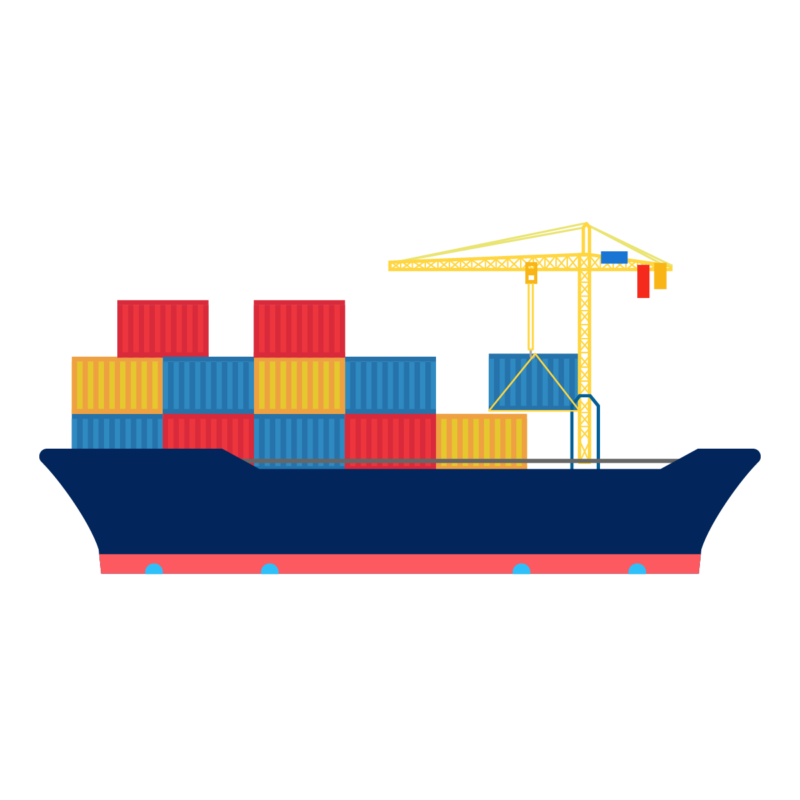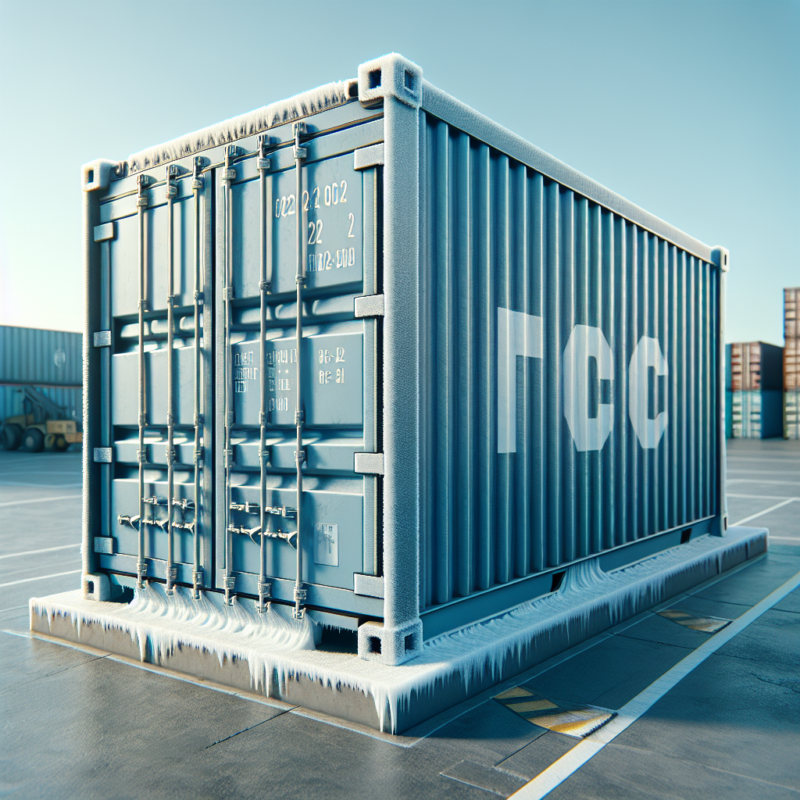Uncategorized
refrigerated shipping container
Benefits of Using Refrigerated Shipping Containers for Perishable Goods
Refrigerated shipping containers, also known as reefer containers, have revolutionized the transportation of perishable goods. These specialized containers are designed to maintain a specific temperature range, ensuring that perishable items such as fruits, vegetables, dairy products, and meats arrive at their destination fresh and in optimal condition. In this article, we will explore the benefits of using refrigerated shipping containers for perishable goods.
One of the main advantages of using refrigerated shipping containers is the ability to transport perishable goods over long distances. With the rise of global trade, the demand for fresh produce and other perishable items has increased. Refrigerated shipping containers allow these goods to be transported across continents and oceans, reaching consumers in different parts of the world. This has opened up new markets for farmers and producers, allowing them to expand their businesses and increase their profits.
Another benefit of using refrigerated shipping containers is the preservation of quality and freshness. These containers are equipped with advanced temperature control systems that can maintain a specific temperature range, usually between -25°C to +25°C. This ensures that the perishable goods are kept at the ideal temperature throughout the journey, preserving their quality and freshness. This is especially important for delicate items such as fruits and vegetables, which can easily spoil if not stored at the right temperature.
Moreover, refrigerated shipping containers offer a safe and hygienic mode of transportation for perishable goods. These containers are made of high-quality materials that are designed to withstand extreme temperatures and harsh weather conditions. They are also equipped with ventilation systems that allow for proper air circulation, preventing the growth of bacteria and mold. This ensures that the goods remain safe for consumption upon arrival at their destination.
In addition to preserving the quality and safety of perishable goods, refrigerated shipping containers also help to reduce food waste. According to the Food and Agriculture Organization of the United Nations, approximately one-third of all food produced in the world is lost or wasted. This is a significant issue, especially when considering the fact that millions of people around the world suffer from hunger and malnutrition. By using refrigerated shipping containers, food can be transported safely and efficiently, reducing the risk of spoilage and ultimately reducing food waste.
Refrigerated shipping containers also offer flexibility and convenience for both producers and consumers. These containers come in various sizes, ranging from 20 feet to 40 feet, allowing for the transportation of different quantities of perishable goods. They can also be easily transported by different modes of transportation, including ships, trains, and trucks. This makes it easier for producers to reach different markets and for consumers to access a variety of fresh produce from different parts of the world.
Furthermore, refrigerated shipping containers are environmentally friendly. With the growing concern for the environment, it is essential to consider the impact of transportation on our planet. These containers are designed to be energy-efficient, using advanced technology to maintain the desired temperature without consuming excessive energy. This not only reduces the carbon footprint but also helps to lower transportation costs for producers.
In conclusion, refrigerated shipping containers have revolutionized the transportation of perishable goods. They offer numerous benefits, including the ability to transport goods over long distances, preserve quality and freshness, reduce food waste, provide flexibility and convenience, and promote environmental sustainability. As global trade continues to grow, the demand for refrigerated shipping containers will only increase, making them an essential tool for the transportation of perishable goods.
How to Properly Pack and Load a Refrigerated Shipping Container

Refrigerated shipping containers are an essential tool for transporting temperature-sensitive goods across long distances. These containers are designed to maintain a specific temperature range, ensuring that the goods inside remain fresh and safe for consumption. However, in order for the container to effectively do its job, it is crucial to properly pack and load it. In this article, we will discuss the steps to properly pack and load a refrigerated shipping container.
The first step in packing a refrigerated shipping container is to ensure that the container is clean and free of any debris. This is important because any dirt or debris can compromise the integrity of the container and affect the temperature control. It is recommended to thoroughly clean the container before loading any goods.
Next, it is important to properly insulate the container. This is especially crucial if the goods being transported are highly sensitive to temperature changes. Insulation helps to maintain a consistent temperature inside the container, preventing any fluctuations that could potentially damage the goods. There are various types of insulation materials available, such as foam, bubble wrap, and thermal blankets. It is important to choose the right type of insulation based on the specific needs of the goods being transported.
Once the container is clean and insulated, it is time to pack the goods. It is important to carefully pack the goods in a way that maximizes space and minimizes any potential damage during transit. This can be achieved by using sturdy packaging materials and arranging the goods in a way that they are tightly packed and do not move around during transportation. It is also important to evenly distribute the weight of the goods to prevent any imbalance in the container.
In addition to proper packing, it is also important to consider the placement of the goods inside the container. Goods that require a lower temperature should be placed at the bottom of the container, while those that require a higher temperature should be placed on top. This helps to ensure that the goods are exposed to the appropriate temperature throughout the journey.
Another important aspect of properly packing a refrigerated shipping container is to label the goods. This includes labeling the goods with their specific temperature requirements, as well as any handling instructions. This helps to ensure that the goods are handled and stored correctly throughout the journey.
After the goods are packed and labeled, it is time to load the container onto the shipping vessel. It is important to use proper equipment, such as forklifts or cranes, to carefully load the container onto the vessel. It is also important to secure the container properly to prevent any movement during transit.
Once the container is loaded onto the vessel, it is important to monitor the temperature inside the container throughout the journey. This can be done through the use of temperature monitoring devices, which can alert the shipping company if there are any fluctuations in temperature. It is also important to have a backup plan in case of any technical issues with the refrigeration system.
In conclusion, properly packing and loading a refrigerated shipping container is crucial for ensuring the safe and efficient transportation of temperature-sensitive goods. It is important to start with a clean and well-insulated container, followed by careful packing and placement of the goods. Labeling and proper loading techniques are also important factors to consider. By following these steps, you can ensure that your goods arrive at their destination fresh and in optimal condition.
The Future of Refrigerated Shipping Containers: Advancements and Innovations
Refrigerated shipping containers have revolutionized the transportation of perishable goods across the globe. These containers, also known as reefers, are specially designed to maintain a specific temperature range to preserve the quality and freshness of the goods being transported. With the increasing demand for fresh produce and other temperature-sensitive products, the use of refrigerated shipping containers has become essential in the global supply chain. As technology continues to advance, so does the future of refrigerated shipping containers. Let’s take a closer look at the advancements and innovations that are shaping the future of these containers.
One of the most significant advancements in refrigerated shipping containers is the use of advanced insulation materials. Traditionally, reefers were insulated with polyurethane foam, which provided adequate insulation but was not environmentally friendly. However, with the growing concern for sustainability, manufacturers have started using eco-friendly insulation materials such as vacuum insulation panels and aerogel. These materials not only provide better insulation but also reduce the overall weight of the container, making it more fuel-efficient.
Another innovation that is gaining popularity in the world of refrigerated shipping containers is the use of smart technology. Smart reefers are equipped with sensors that monitor and regulate the temperature, humidity, and other environmental conditions inside the container. This technology allows for real-time tracking and remote monitoring of the container’s conditions, ensuring that the goods are transported in optimal conditions. In case of any deviations from the set parameters, the sensors send alerts to the shipping company, allowing them to take immediate action and prevent any spoilage of the goods.
The use of renewable energy sources is also a significant development in the future of refrigerated shipping containers. With the rising concerns about carbon emissions and the need for sustainable solutions, manufacturers have started incorporating solar panels and other renewable energy sources into reefers. These containers can generate their own power, reducing the reliance on diesel generators and minimizing the carbon footprint of the shipping industry.
In addition to these advancements, there are also ongoing innovations in the design and construction of refrigerated shipping containers. One such innovation is the use of phase change materials (PCM) in the insulation. PCM is a substance that can absorb and release large amounts of heat without changing its temperature. This allows for better temperature control inside the container, reducing the risk of temperature fluctuations and ensuring the freshness of the goods.
Furthermore, there is a growing trend towards the use of multi-temperature reefers. These containers have multiple compartments with different temperature zones, allowing for the transportation of a variety of goods in one shipment. This not only saves time and cost but also reduces the carbon footprint of the shipping process.
The future of refrigerated shipping containers also includes advancements in monitoring and tracking systems. With the use of blockchain technology, the entire supply chain can be tracked and recorded, providing transparency and traceability of the goods being transported. This technology also helps in detecting any potential issues or delays in the shipment, allowing for timely interventions and ensuring the quality of the goods.
In conclusion, the future of refrigerated shipping containers is full of advancements and innovations that aim to make the transportation of perishable goods more efficient, sustainable, and reliable. From eco-friendly insulation materials to smart technology and renewable energy sources, these containers are evolving to meet the growing demands of the global supply chain. With these advancements, we can expect to see a significant reduction in food waste and a more sustainable approach to the transportation of temperature-sensitive goods.

